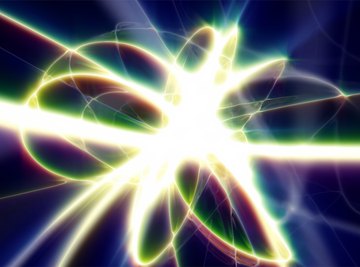
First predicted by Albert Einstein, Bose-Einstein condensates represent a strange arrangement of atoms that was not verified in laboratories until 1995. These condensates are coherent gases, created at temperatures that are colder than can be found anywhere in nature. Within these condensates, atoms lose their individual identities and merge to form what is sometimes referred to as a “super atom.”
Bose-Einstein Condensate Theory
In 1924, Satyendra Nath Bose was studying the idea that light traveled in tiny packets, now known as photons. He defined certain rules for their behavior and sent them to Albert Einstein. In 1925, Einstein predicted that these same rules would apply to atoms because they were also bosons, having an integer spin. Einstein worked out his theory and discovered that at almost all temperatures, there would be little difference. However, he found that at extremely cold temperatures something very strange should occur – the Bose-Einstein condensate.
Bose-Einstein Condensate Temperature
Temperature is simply a measure of atomic motion. Hot items consist of atoms that are moving quickly, while cold items consist of atoms that are moving slowly. While the speed of individual atoms varies, the average speed of the atoms remains constant at a given temperature. When discussing Bose-Einstein condensates, it is necessary to use the Absolute, or Kelvin, temperature scale. Absolute zero is equal to -459 degrees Fahrenheit, the temperature at which all motion ceases. However, Bose-Einstein condensates only form at temperatures less than 100 millionth of a degree above Absolute zero.
Forming Bose-Einstein Condensates
As predicted by Bose-Einstein statistics, at very low temperatures, most atoms in a given sample exist in the same quantum level. As temperatures approach Absolute zero, more and more atoms descend to their lowest energy level. When this occurs, these atoms lose their individual identity. They become superimposed over one another, coalescing into one indistinguishable atomic blob, known as a Bose-Einstein condensate. The coldest temperature that exists in nature is found in deep space, at around 3 degrees Kelvin. However, in 1995, Eric Cornell and Carl Wieman were able to cool a sample of 2,000 Rubidium-87 atoms to less than 1 billionth of a degree above Absolute zero, generating a Bose-Einstein condensate for the first time.
Bose-Einstein Condensate Properties
As atoms cool, they behave more like waves and less like particles. When cooled enough, their waves expand and begin to overlap. This is similar to steam condensing on a lid when it is boiled. The water clumps together to form a drop of water, or condensate. The same occurs with atoms, only it is their waves that merge together. Bose-Einstein condensates are similar to laser light. However, instead of photons behaving in a uniform manner, it is the atoms that exist in perfect union. Like a drop of water condensing, the low-energy atoms merge together to form a dense, indistinguishable lump. As of 2011, scientists are just beginning to study the unknown properties of Bose-Einstein condensates. Just as with the laser, scientists will undoubtedly discover many uses for them that will benefit science and humanity.
References
About the Author
Doug Bennett has been researching and writing nonfiction works for more than 20 years. His books have been distributed worldwide and his articles have been featured in numerous websites, newspapers and regional publications. Bennett's background includes experience in law enforcement, the military, sound reinforcement and vehicle repair/maintenance.
Photo Credits
Jupiterimages/Photos.com/Getty Images
